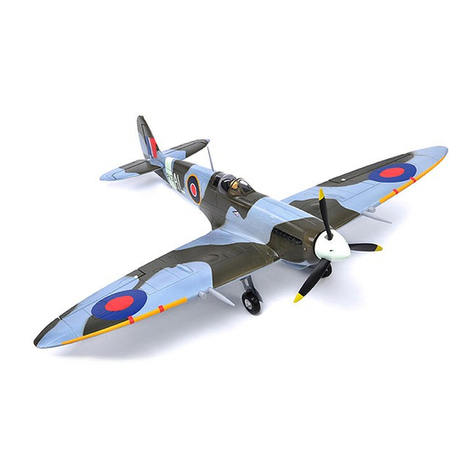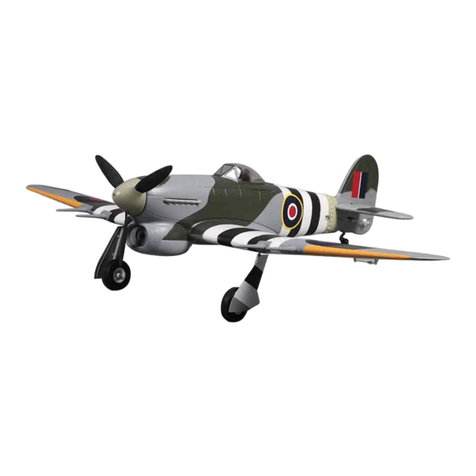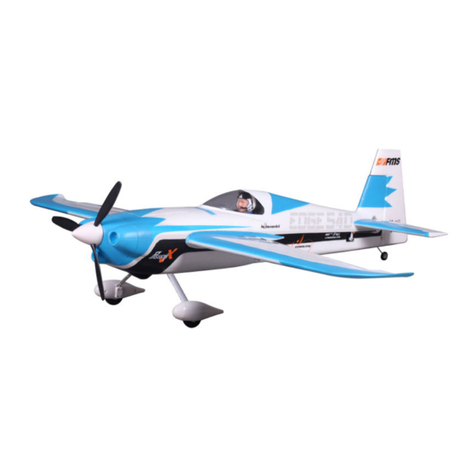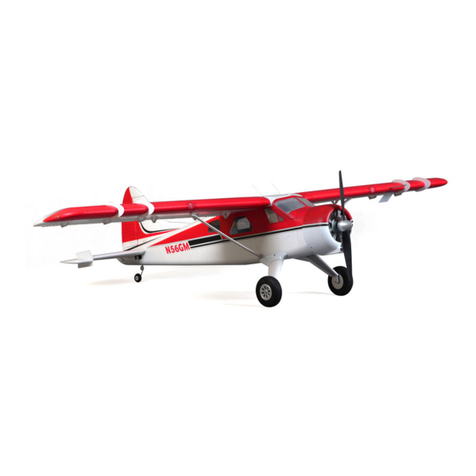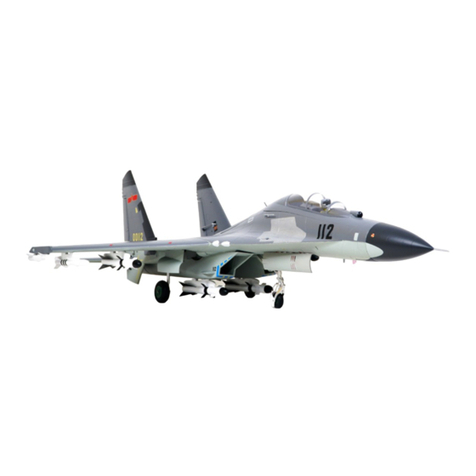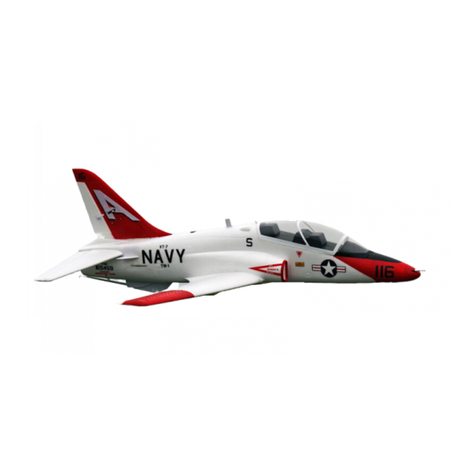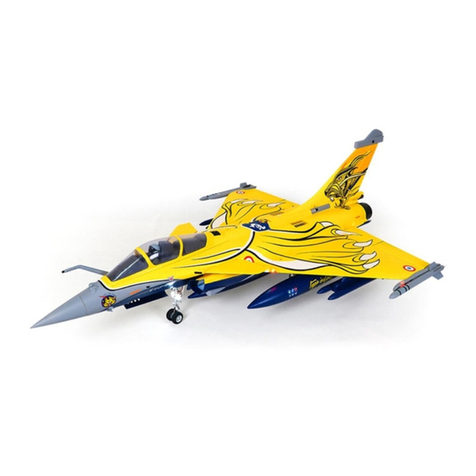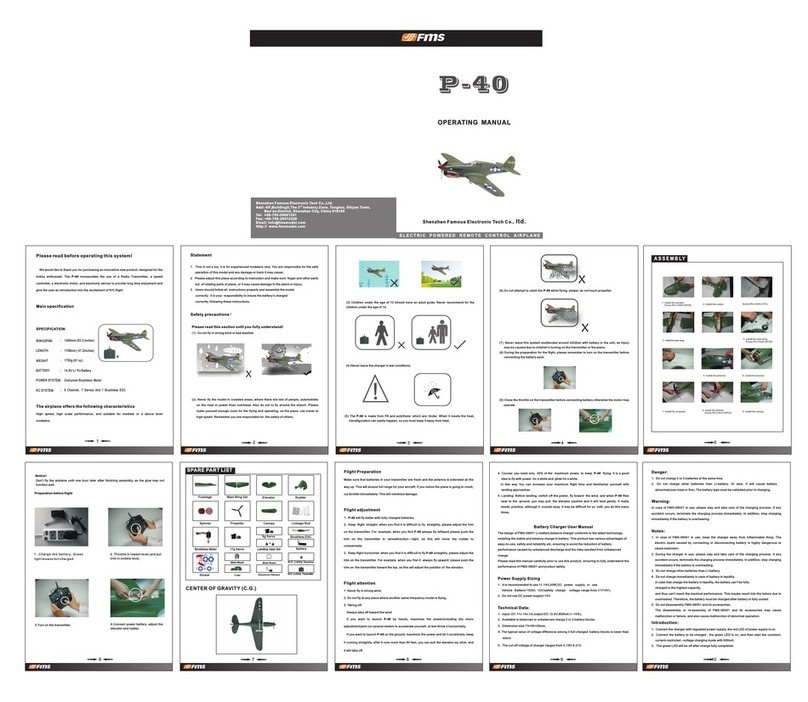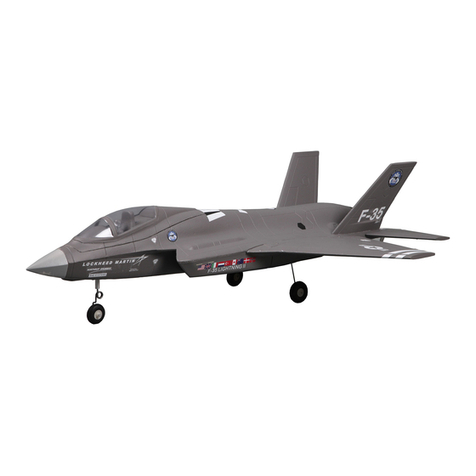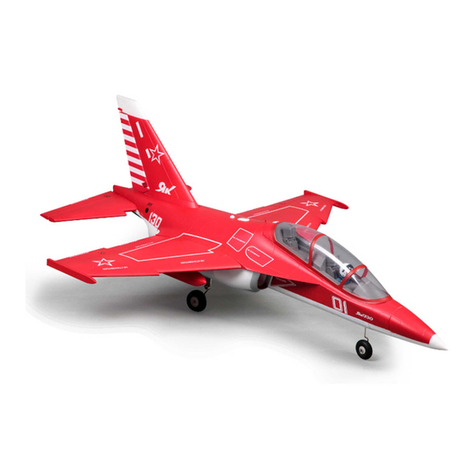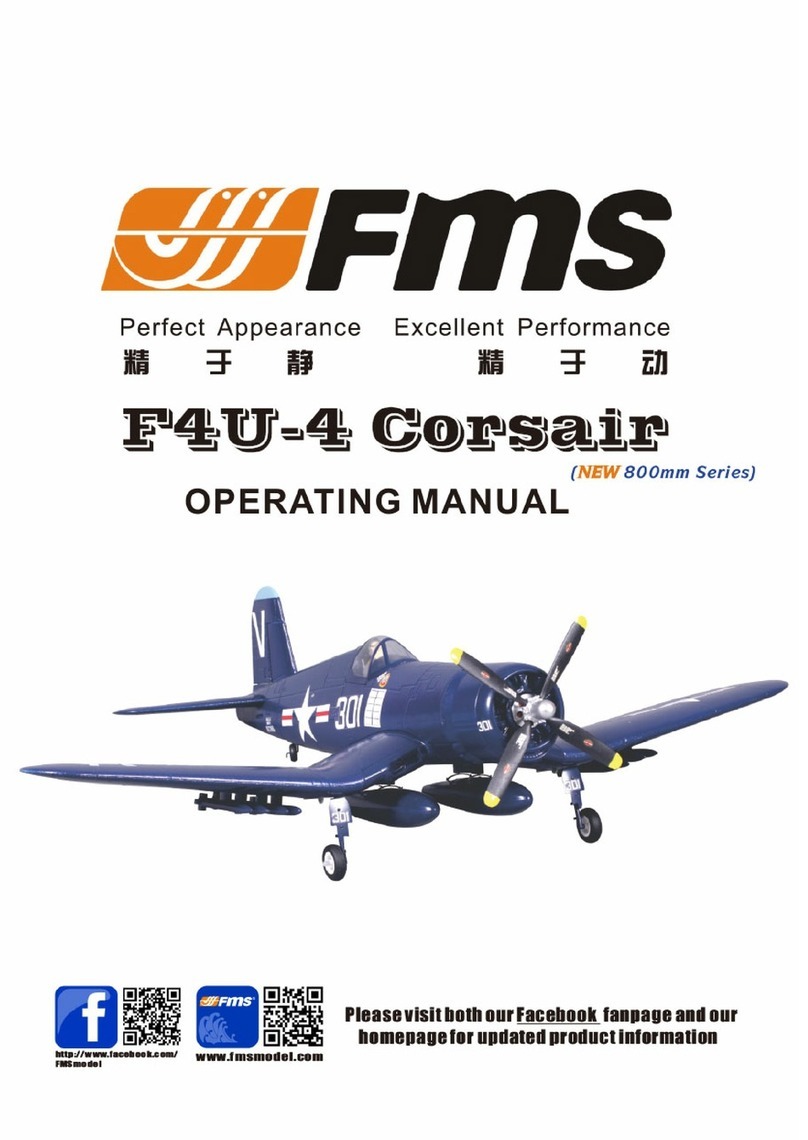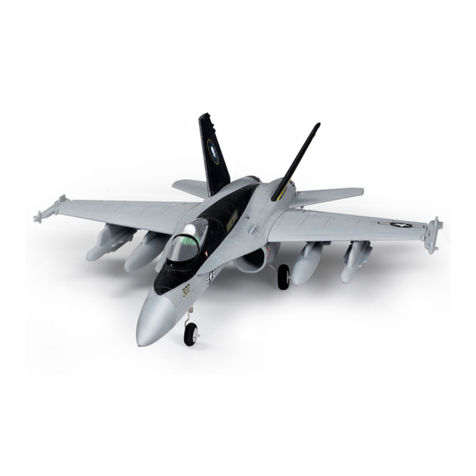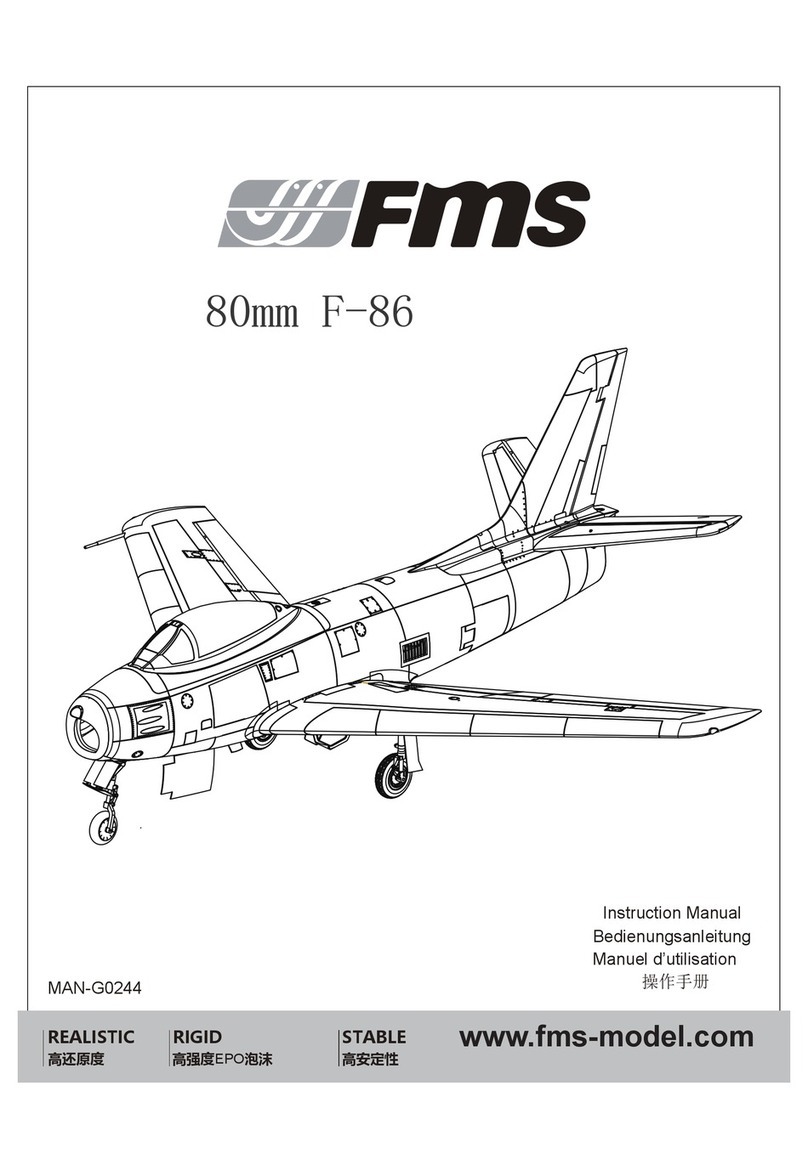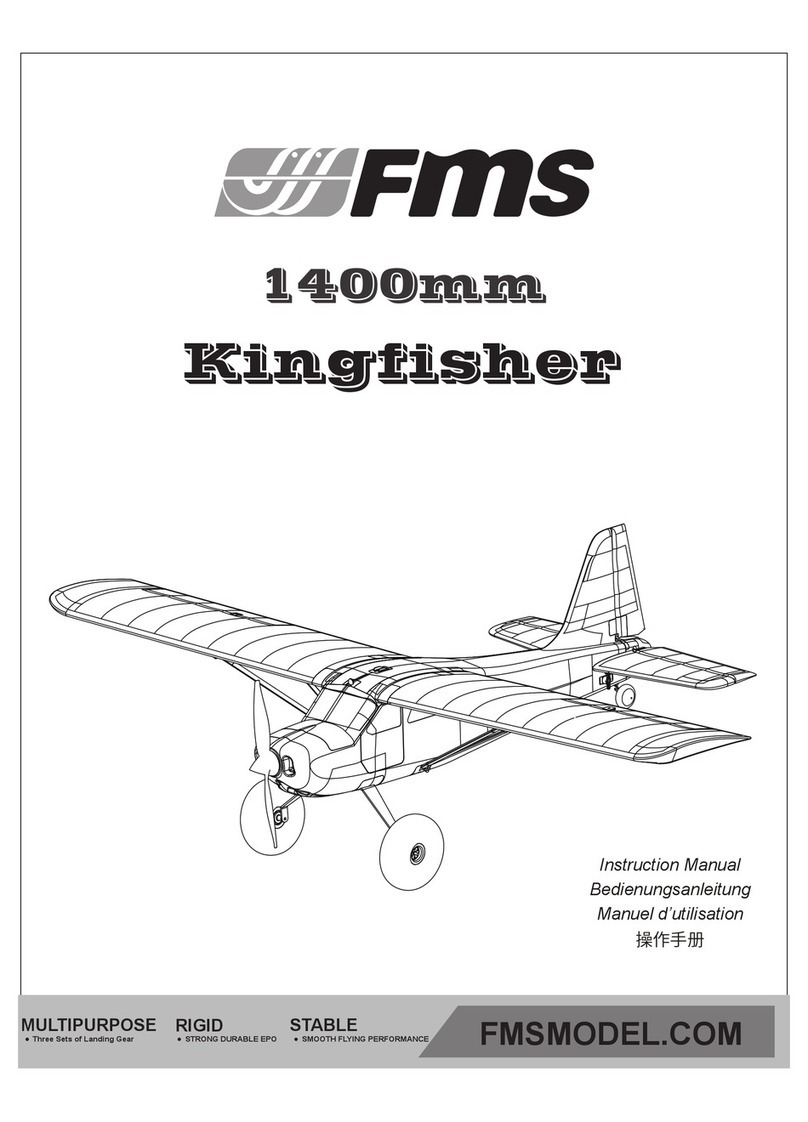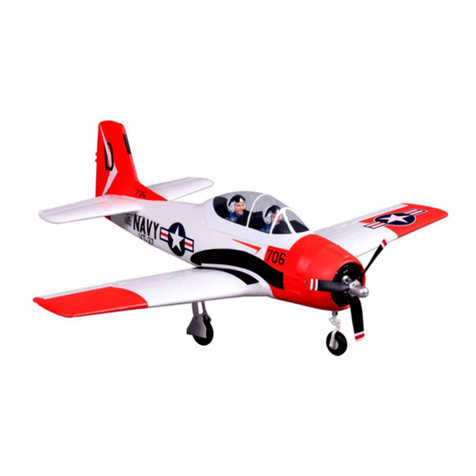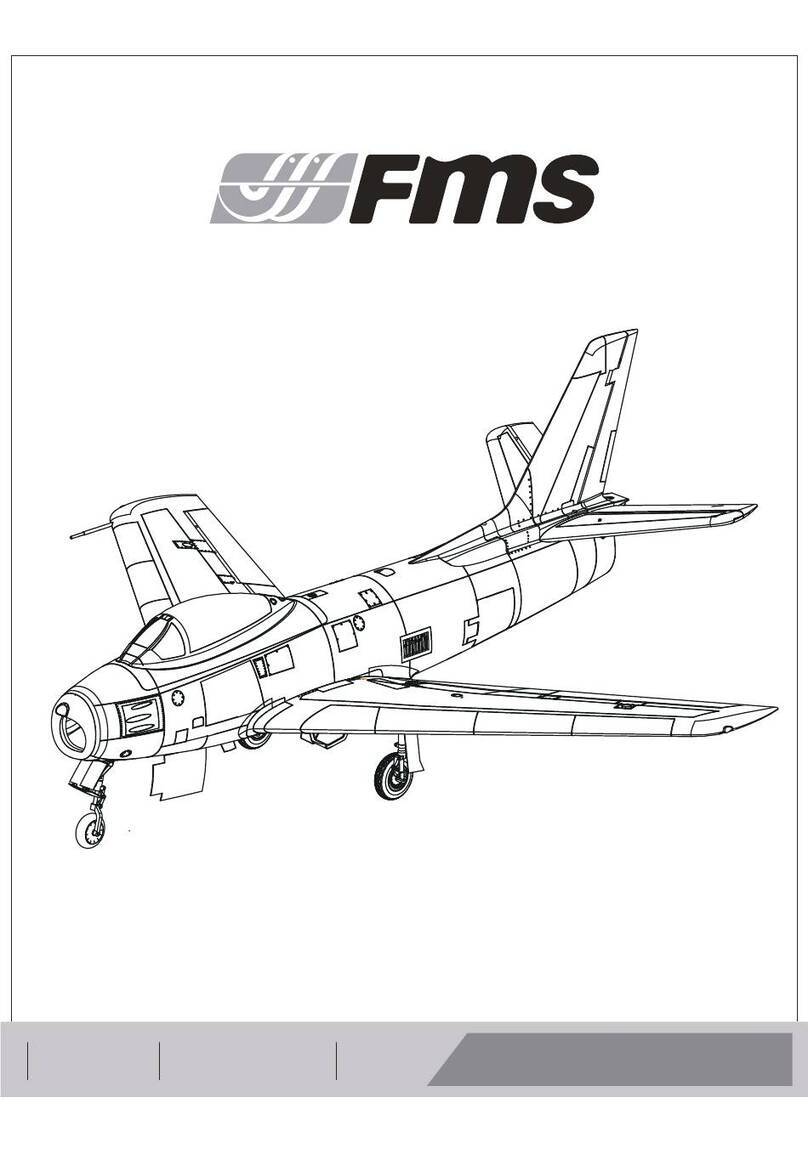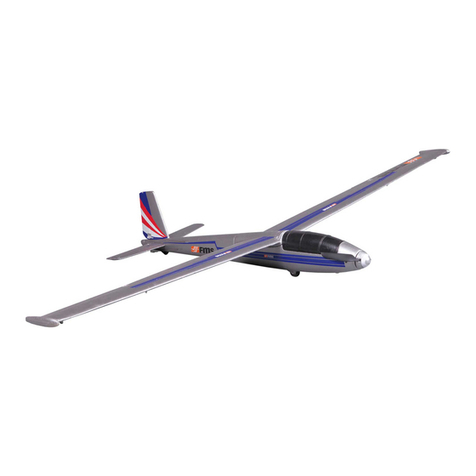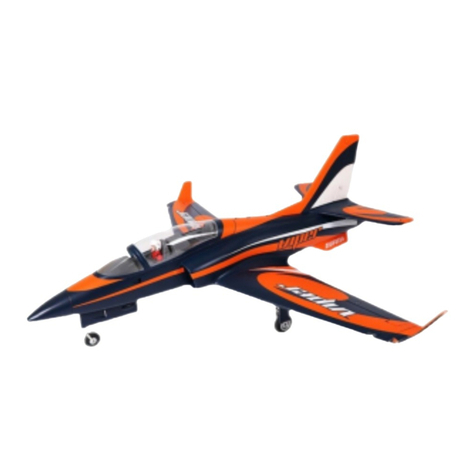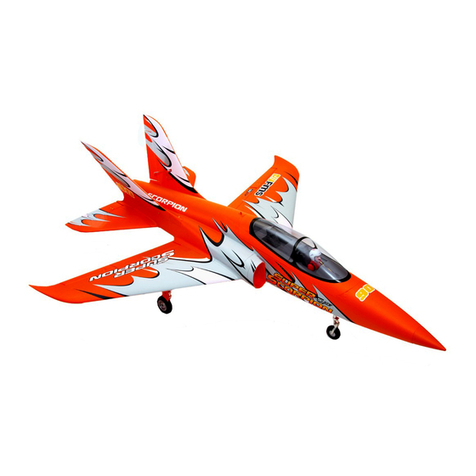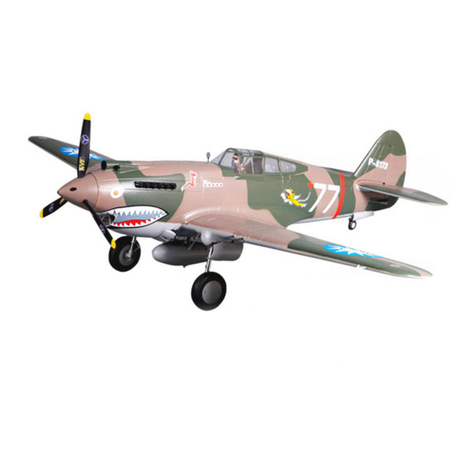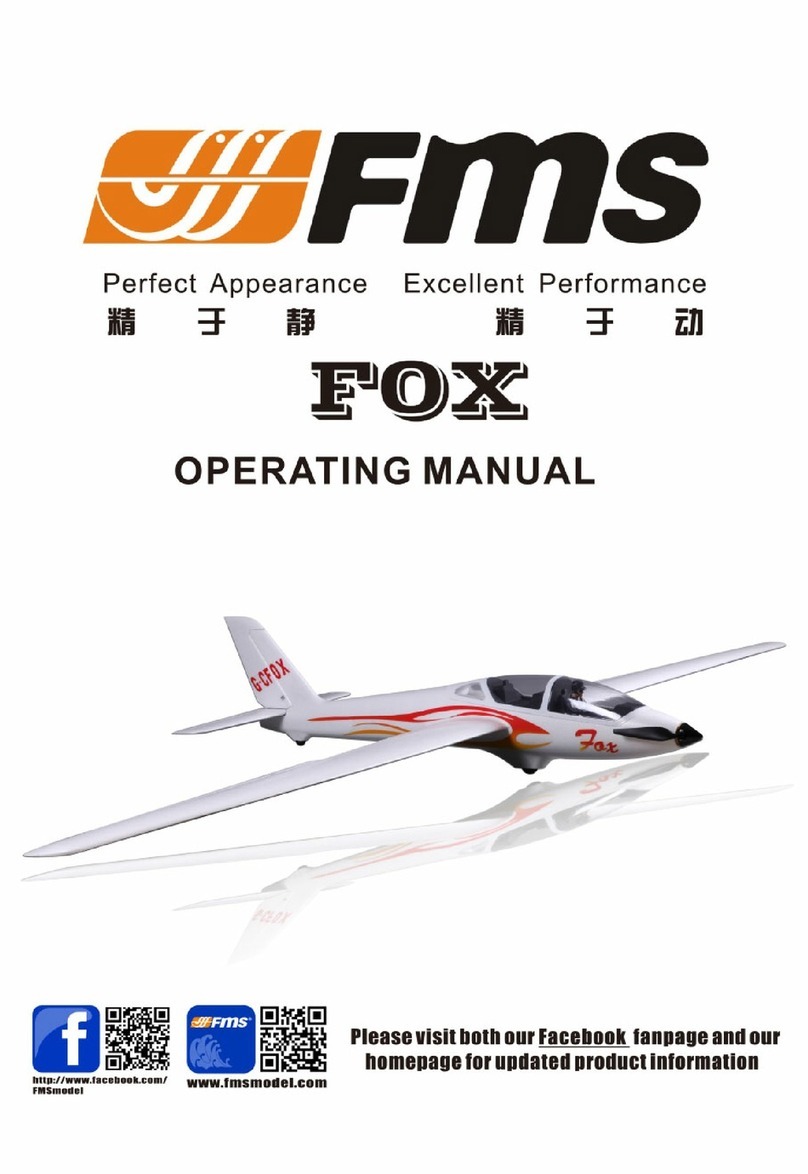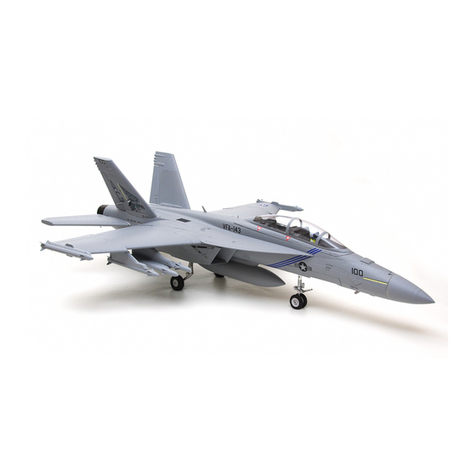
3
EN
Before assembly, please inspect the contents of the kit. The
photo below details the contents of the kit with labels. If any
parts are missing or defective, please identify the name or
part number (refer to the spare parts list near the end of the
manual) then contact your local shop or email us:
Kitcontents
Introduction
Kit contents
Model assembly
Battery installation
Receiver diagram
Preflight check
Clevis installation
Control horn and servo arm settings
Center of gravity(CG)
Before flying the model
Flying course
Troubleshooting
Spare parts list content
Tableofcontents
······································································· 3
······································································· 3
································································ 4
····························································· 7
8······························································
·································
8
······························································ 10
···································································
10
························································ 10
····················································· 11
····································································· 11
································································ 12
····················································· 12
Brushless ESC introduction ············································· 13
Introduction
Wingspan: 1300mm(51.2in)
Overall length: 986mm(38.8in)
Flying weight: ~ 1450g
Motor size: 3536-KV850
Wing load: 48g/dm² (0.096oz/in²)
Wing area: 30dm² (464.7sq.in)
ESC: 40A
Servo: 9g x 6
Recommended battery: 11.1V 2200mAh 25C
Specifications
@fmsmodel.com.
• Powerful 3536-850KV motor with 40A ESC provides adequ-
ate thrust for any situation
• CNC metal landing gear structure for less-than-perfect landings
• Oversized pneumatic rubber tires for all-terrain operations
• STOL capable (Takes off in less than 3m/10ft)
• Preinstalled navigation and landing lights
• Two-section fuselage
• Two-piece wing and horizontal stabilizer for easy transportation
• High-strength carbon fiber wing spars
• Screw-together assembly
• Large battery bay
• Tough two-blade nylon propellers
• Functional flaps
• Optional floats
A:Front Fuselage B:Rear Fuselage C:Main Wing Set
D:Horizontal Stabilizer E:Front Landing Gear Set
F:Supporting Bar Set G:Spinner I:Screw Set
J:Linkage Rod K:Propeller
H:Pipe
The Piper PA-18 Super Cub is a two-seat, single-engine mono-
plane. It was developed from the Piper PA-11. In close to 40 years
of production, over 9,000 were built. Super Cubs are commonly
found in roles such as bush flying, banner towing and glider
towing.
The FMS 1700mm PA-18 was launched in 2019, and its stable,
easy-to-fly and easy-to-operate features have brought full surpris-
es to both new and old pilots. While this trainer has been widely
praised, FMS has been constantly asked whether it is possible to
reduce the size of the aircraft, including the aircraft itself and the
packaging, while maintaining its stability and operating controlla-
bility as much as possible, so that it can be picked up like a board-
ing suitcase.
With the 1300mm PA-18, FMS has answered the above question.
The 1300mm PA-18 also adopts a two-section main wing and
horizontal stability structure, but at the same time, the fuselage is
also two-section, which greatly facilitates players' transportation
and carrying. It can be hidden in the corner of a car trunk, ready to
be used at any time.
Thanks to its functional flaps, high-lift airfoil, rugged landing gear
and oversized pneumatic rubber tires- the 1300mm PA-18 Super
Cub has impressive short take-off and landing (STOL) perfor-
mance, allowing it to operate from just about any terrain.
In addition, the assembly steps of the 1300mm PA-18 are still
simple and convenient, and the assembly and disassembly of the
entire aircraft can be completed with just a few screws.
For pilots wanting to get the genuine bush-plane experience, the
PA-18 Super Cub can be equipped with floats.
The latest 1300mm PA-18 could be a great start to enjoying
versatile, fun and exceptionally relaxing flight.
Features:
• Preinstalled ball-linked pushrods for increased precision
A.
C.
B.
D.
G.
H. I.
E. F.
J. K.






